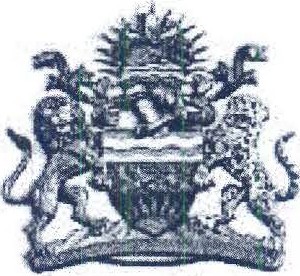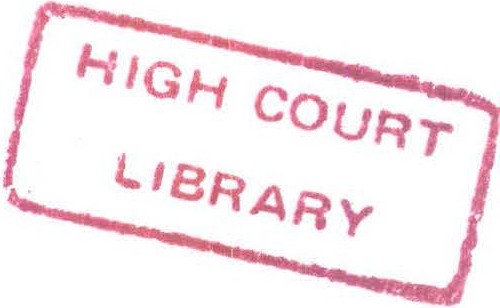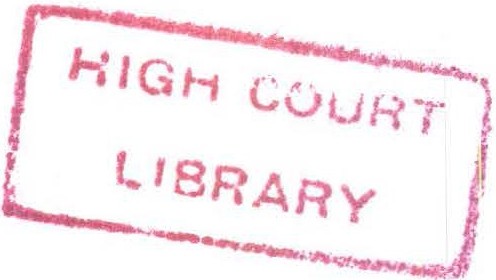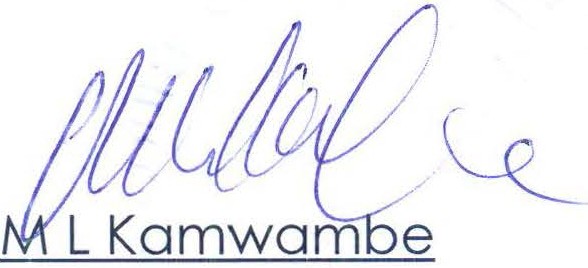

PRINCIPAL REGISTRY
CRIMINAL DIVISION
CRIMINAL APPEAL NO.22 OF 2015
BETWEEN:
JOSEPH KAPINGA
And
ANNIE KAPINGA
- V-
THE REPUBLIC
Coram: Hon. Justice M L Kamwambe
Inspector Banda of counsel for the State
Mickeus of counsel for the Appellants
Phiri... Official Interpreter
Kamwambe J
JUDGMENT
The Appellants were convicted by the Chief Resident Magistrate Court sitting at Zomba of child abduct ion contrary to section 79 of the Child Care and Justice Protection Act (CCJPA) ;
![]()

and were sentenced to 12 years imprisonment each. The grounds of appeal are as follows:
l. The learned trial magistrate erred in law by convicting the Appellants on the offence of Child trafficking when all the elements require at law in respect of the offence were not proved beyond reasonable doubt.
2. The learned trial magistrate erred in law in relying on the evidence of PW3 and PW4 who were both accomplices to the case and their evidence was short of corroboration.
3. The learned trial Magistrate erred in law by relying on the confession of PW3 and PW4 to convict the Appellants herein.
4. The learned trial Magistrate erred in law and in fact by dismissing the 1st Appellant's defence of alibi when no evidence discrediting the same was adduced in court.
5. The learned trial Magistrate erred in law in disregarding the evidence of DW8 whose evidence corroborated the 1st Appellant's defence of alibi merely on the basis that the witness was present in the court when other defence witnesses were testifying.
Particulars
i. The trial Magistrate should not have allowed the said witness to testify in the first place.
ii. The conduct of the trial Magistrate prejudiced the accused person who thereby lost the opportunity to replace DW8.
6. The learned trial Magistrate erred in law and in fact when she held that the child was sold to the Appellants for the purposes of using him in the maize mill when there was no evidence to support such a conclusion.
7. The learned trial Magistrate erred in law in holding that Appellants were both liable for the offence of child trafficking without establishing the role of each suspect in line of the elements charged.
8. The learned trial Magistrate erred in law and in fact in admitting and relying on the alleged 2nd Appellant's caution statement when the 2nd Appellant disowned the statement and she even never signed for the same.
9. The learned trial Magistrate erred in law by failing to make a finding on whether the State had proved its case beyond reasonable doubt or not before the finding of guilty.
10. The learned Trial Magistrate erred in law by failing to resolve doubts and inconsistences in the State evidence in favour of the Appellants.
11. That the finding of guilty is against the weight of the evidence made available before the trial Magistrate.
12. The sentence of 12 years imprisonment is manifestly excessive and on the high side considering the circumstances of the case and the mitigating factors.
Additional grounds of appeal are as follows:
1. The learned trial magistrate erred in law in holding a trial in camera at Zomba Central Prison building office.
2. The trial learned Chief Resident Magistrate erred in law and fact to transfer the hearing of the case to a court situate outside the city of Zomba.
3. The trial learned Chief Resident Magistrate erred in law and fact in refusing the 1st and 2nd Appellants to go on bail thereby denying them the chance to prepare for the case effectively; and gave the impression that the court was already biased against the Appellants.
The issues that arise are:
a) Whether there was need for corroboration in respect of evidence from accomplices of the crime.
b) Whether there was sufficient evidence to sustain the finding of guilty herein.
c) Whether the sentence of 12 years imprisonment is manifestly excessive.
The particulars of the offence are that:
Joseph Samuel Kapinga and Annie Kapinga during the month of August 2013 at Joli Pehisi village in the district of Zomba transacted in the buying of a child Kelvin Mbazo of 7 years from Jonathan Mkoma for the purpose of exploiting the said child.
The offence section reads as follows:
1) Any person who takes part in any transaction the object or one of the objects of which is child trafficking commits an offence and shall be liable to imprisonment for life.
2) For the purpose of this section, child trafficking means the recruitment, transaction, transfer, harbouring or receipt of a child for the purposes of exploitation.
It is my view that the particulars of the offence were reasonably drafted in line with the law.
If it may be known from the outset that the Appellants were represented by counsel Chancy Gondwe at trial. It should be admitted that this is a mouthful of grounds of appeal and Appellant's counsel could have done better to condense them into a few grounds. It is important to choose your grounds carefully and draft them with clarity so that the court does not face difficulties in dealing with them. Counsel should not give the impression that he is trying to give all and any imaginable grounds of appeal in case one or some will be successful. A lot of time may be wasted needlessly.
I have also observed that skeleton arguments by the defence are incomplete as portions where cases are cited are clearly blank carrying no relevant details from the cases. I am not sure whether this was done inadvertently or not.
It is my view that grounds 1, 7, 9 10 and 11 could be lumped together and be dealt with as one. The main issue in these grounds is whether State evidence reached the required standard of 'beyond reasonable doubt', or whether the State succeeded to prove the case ' beyond reasonable doubt'. This obviously will require us to look at whether accomplice evidence of PW3 and PW4 were duly admitted. I would not wish to consider evidence of PW4 wife to PW3 who were in care of the alleged trafficked victim, Kelvin Mbazo, because she admitted in cross-examination at page 64 of the lower court record that she did not know the accused in the dock (now Appellants) and never interacted with them.
Section 242 of the Criminal Procedure and Evidence Code provides as follows:
"An accomplice shall be a competent witness against an accused person; and a conviction shall not be set aside merely because it proceeds upon the uncorroborated testimony of an accomplice:
Provided that the court shall take recognizance of the fact that it is unsafe to convict an accused on the uncorroborated evidence of an accomplice, and shall weigh the evidence, and if it comes to the conclusion that the evidence of the accomplice, although uncorroborated, is true, it may be used as a basis of conviction."
This is a very clear provision in that it should not raise any controversies in its application. All we have to do is to see if the learned Magistrate applied this provision with understanding. In my view, she appreciated it, hence she said:
"The defence asserts rightly that PW 3 is an accomplice in this case having been convicted of selling a child. The question therefore is whether he needs independent corroborating evidence as a matter of law or as a matter of practice. In my considered understanding section 242 of the Criminal procedure and Evidence Code does not put it as a matter of law that an accomplice has to be corroborated by another independent witness. It is prudent though to cautiously treat the evidence of an accomplice before convicting. I therefore warn myself on how to treat the evidence of PW 3.
CRIMINAL DIVISION
I should state however that disregarding his entire evidence would not be justifiable. The said PW3 had his own inconsistence as regards when he married PW4. This inconsistence though does not directly bear on the elements of child trafficking because it is certainly an undisputed fact the couple took into their control KM in February 2013. This fact has been stated under oath by three witnesses. The firmness in the testimony of PW3 and his consistency in all the times he has been in court makes it difficult for this court to doubt the truthfulness of his evidence."
I am in no doubt that the learned Magistrate understood and appreciated sufficiently well the application of the said section 242 and that she rightly warned herself on the danger of convicting on uncorroborated testimony. She looked at the totality of the evidence and she was convinced that PW3 was a credible witness. In this regard the learned Magistrate was entitled to dispense with the requirement of corroboration. I do not see how I can fault the learned Magistrate after she weighed the evidence and chose to accept the evidence of PW3.
I wish to consider the issue of identification of the accused by PW3. Despite the fact that the Appellants were represented in the lower court, the issue of due identification never arose and was never raised by the defence. I wonder how it becomes an issue now. I have perused the record properly and I find that application of the Turnbull principles in identification of the accused persons does not come in because of the several encounters of PW3 and the Appellants. They met and transacted on various days on the sale and purchase of the seven year old boy and all meetings including the meeting when they exchanged money were in broad day light. They met at the premises of the Appellants mostly and
CRIMINAL DIVISION
PW3 testified that at the very first time he met the 1st Appellant, he was employed by the said 1st Appellant to be packing nandolo (peas) in his field and he was paid K200, and he was given K l0, 000 to bring a mortar for the Appellant. Later he came to know that by mortar he meant a human being to be used in the maize mill, and since he was desperate for money, he delivered the boy to the Appellant.
In Mabvuto Joseph and 2 others v The Republic Criminal Appeal Case No. 29 of 201 6 this court made it clear that not all circumstances require application of the Turnbull Principles. The court said:
"I had occasion to read carefully the lower court record including the judgment. The circumstances called for the application of the Turnbull principles in R v Turnbull [1977] QB 224 because the question of satisfactory identification of 1st Appellant arises automatically from the circumstances that prevailed. The circumstances should be such that they render the risk of a wrong identification being made, or that it is more likely or probable that the identification was mistaken due to circumstances."
PW3 also clearly mentioned the 2nd Appellant to establish her involvement. This is what he said in cross-examination:
"Apart from me, we were 3 people when we made the agreement to sell the child. Thus me, 1st and 2nd accused. I sold this child while alive. He said he will pay me K3, 500, 000 once I have sold him this child. I was immediately given K250, 000.
The 2nd accused went into the maize mill and took money, gave it to 1st accused who in turn gave me. At this time the child was 7/8 years of age."
The court in its judgment also canvassed this point of involvement of 2nd Appellant when it said:
"The defence have raised issues regarding participation of the 2nd accused in this matter. The evidence of PW3 is that he found the 2nd accused at the maize mill on all the instances he went there. She is the one who told him that the 1st accused wanted a person to do maize-mill work and not a mortar. She is the one who is said to have directed PW3 to the shop of the 1st accused in Zomba City. She is also the one who took money and gave the 1st accused who in turn paid PW3. Section 22 of the Penal Code states that offences committed by joint offenders in prosecution of a common purpose when two or more persons form a common intention to prosecute an unlawful purpose in conjunction with one another, and in the prosecution of such purpose; an offence is committed of such a nature that its commission was a probable consequence of the prosecution of such purpose, each of them is deemed to have committed the offence. I therefore find that both suspects took part in the transaction while knowing what they were doing."
I cannot understand why the Turnbull principle should be invoked at this stage when it could have been raised in the lower court, and the propriety of applying them now in the prevailing clear facts as if there was opportunity of mistaken identity. The circumstances show that there could hardly be any mistaken identity and this puts to doubt the alibi by the 1st accused and any other defence witnesses. This argument will not pass.
In any case, the learned Magistrate is seen to have appreciated the principles of identification in her quotation from an undisclosed source as follows:
"That the court must fully appreciate and bear in mind the need for caution before accepting a conviction based principally on witnesses visual identification especially when the defence allege that such identification was mistaken. That whenever the case against an accused depended wholly or substantially on the correctness of one or more of the accused which the defence allege to be mistaken the judge should warn the jury of the special need for caution before convicting the accused in reliance on the correctness of the identification. The judge should direct the jury to examine the circumstances in which the identification of each witness came to be made. The following questions must be posed: How long did the witness have the accused under observation? At what distance? In what light? Was the observation impeded in any way? Had the witness ever seen the accused before? How often?"
I do not see in the record where the confession statement of PW3 and PW4 were used as basis for conviction. Further, it is not correct that the trial Magistrate relied on the 2nd Appellant's caution statement to secure a conviction.
In appeal ground number 5, the magistrate rightly disregarded the evidence of DW8 whose evidence was corroborating the alibi of 1st Appellant. It was incumbent upon defence counsel to advise his witnesses that they ought not to be present in court as trial proceeds until they have testified. They should not leave it to the court always to be announcing that would
be witnesses should march out. This rule promotes fair trial. It is unfortunate that defence counsel appears to be faulting the court for this. The court did the right thing despite that it could also have refused to hear the witness in the first place.
It would appear that I have covered eleven grounds of appeal and now I should also consider the additional three grounds of appeal before I end up with the ground of sentence being manifestly excessive. The first one is that the trial Magistrate erred in law to hold the trial in camera at Zomba Central Prison building office. Justice Chipeta in Towera Chitsa & Another v Republic, Misc. Criminal Application Case No. 160 of 2009, did not approve the holding of court proceedings in places other than designated court premises. I do not approve the same either, but it had to be done f or special security reasons since the public wanted the blood of the accused persons due to the missing child. The holding of trial at the prison premises per se ought not to invalidate proceedings as this was merely a technical affair and no injustice has been shown by the defence arising from this change of premises.
The court uses its discretion whether to transfer a case to a particular court. The defence should be able to show that failure to transfer the case to a nearby court has occasioned some injustice. I do not think that any injustice was caused to the Appellants. The substantive matter of conviction and sentence are not adversely affected by this transfer and the Appellants have not even tried to demonstrate how they are affected.
On the last issue of failure by the trial court to grant the Appellants bail, I can only say that this ground of appeal has nothing to do with conviction and sentence. It is ill timed. It should have been made soon after denial of bail and before conviction. I
do not see myself now being competent to attend to the matter at this stage and I do not see the purpose that would be achieved. Courts should not be forced to exercise their discretion to grant bail or not, in favour of the accused persons. This ground fails as well.
The remaining ground of appeal is one of excessive sentence. In Republic -v- Shauti 8 MLR 69 late Justice Jere held ' that a sentence imposed on the accused must fit the crime and the criminal, be f air to society, and there must be a measure of lenience or mercy.' The sentencing court must come up clear on the circumstances leading to differentiated sentences of co accused to show that fairness was exercised. Transparency and accountability by the courts system are the pith of justice when blended with honesty disposition.
When we consider the circumstances of the case, we find that the 1st Appellant was the master mind who took advantage of the financial plight of PW3 whom he requested to bring him for purchase a commodity in the form of a person to be used in the maize-mill. His sister 2nd Appellant knew or must have known what was being brewed and did take part as narrated above although she was not really in the front line. The child is not found up to now, which aggravates the situation. After seven years from the date of disappearance the child shall be presumed dead and a case of homicide may be commenced. The Appellants did not plead guilty and they seem to be unremorseful. They did not even complete the transaction by fully paying PW3 which shows the untrustworthiness of the Appellants and their inconsiderate conduct towards others. Their behaviour is fraudulent by all standards. ·
![]()
CRIMINAL DIVISION
of sentences, I am of the view that in regard of the seriousness of the offence which attracts the maximum sentence of life imprisonment, a meaningful sentence as intended by Parliament and expected by society needed to be mated. The 5 years sentence should have been enhanced. I did not receive the sentence of 12 years with a sense of shock regarding the circumstances of the case. However, I am prompted to show some mercy upon them and I substitute the sentence of 12 years imprisonment with 10 years for the 1st Appellant and 9 years for the 2nd Appellant. Otherwise this appeal fails in all the other grounds as revealed above. It is so decided.
Pronounced in open court this 4th day of January, 2017 at Chichiri, Blantyre.

JUDGE
![]()